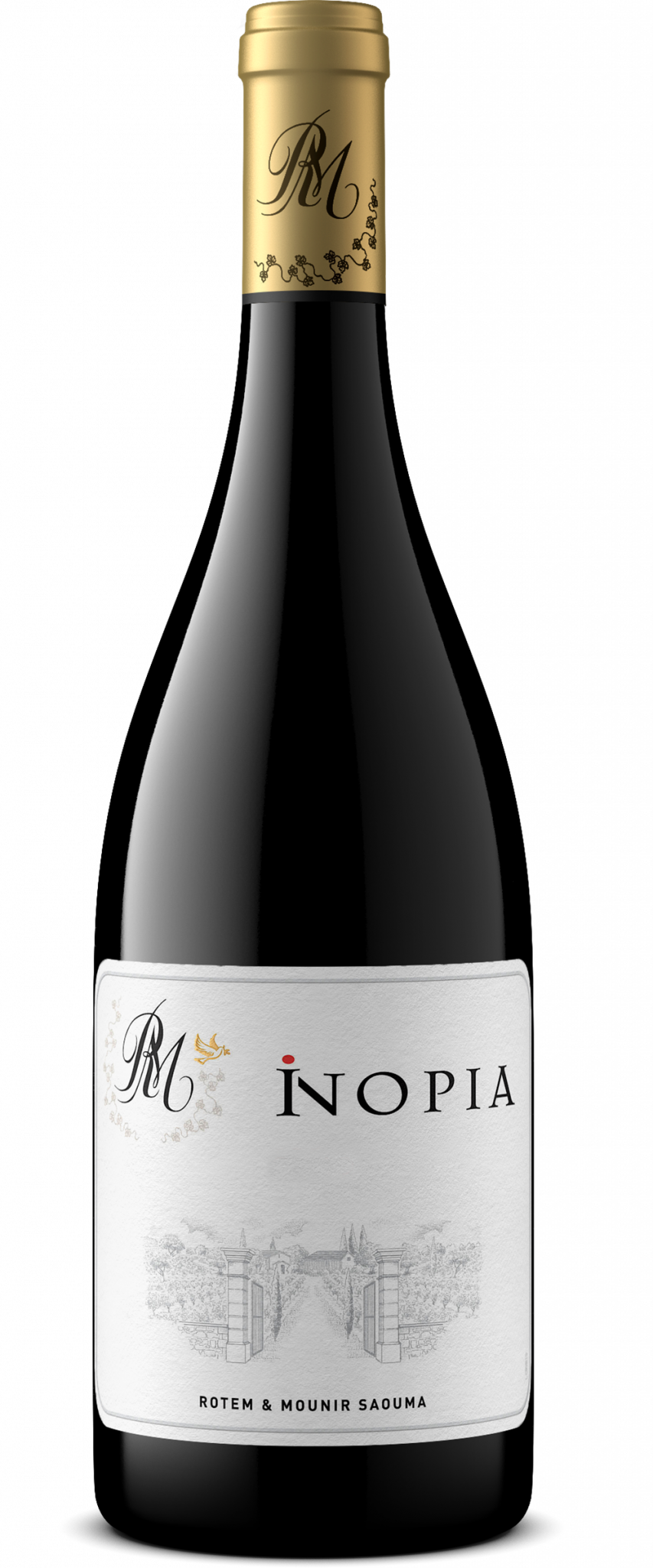
Rotem and Mounir Saouma
Châteauneuf-du-Pape Arioso 2014
Châteauneuf-du-Pape
Mounir Saouma’s story in the Chateauneuf-du-Pape started with a state sale of a small plot in Pignan, one of the most famous vineyard areas of Chateauneuf-du-Pape. Within this first vineyard acquisition, Mounir has one plot of 100% Grenache planted in the 1930s which yields naturally at a miniscule 1 ton per acre. From these vines he produces Arioso.
In the northeast of the appellation facing “the giant of Provence”, the massive Mont Ventoux mountain”, Pignan’s exposure brings freshness to the natural high ripeness achieved in this area. The rocky and sandy soils of this original plot add a sense of elegance. When you start tasting you understand why some have compared his wines to the great Rayas wines of the 1980s or, perhaps as expected given Mounir’s renown as owner and winemaker of Lucien Le Moine, to Burgundy. The sheer density of the low yielding, old vines dances with the freshness and elegance provided by the site. On the label is aptly explained: “Arioso is a style of opera somewhere between an aria and a recital. We chose this name for our wine because it is evocative of both the ethereal and profound”.
Vineyard

The small 100% plot of Grenache Noir planted in the 1930s produces bunches that have very few and small grapes, and are widely spaced. The yields are dramatically low as a result, but the grapes are very healthy due to the spacing, and the concentration from the low vigour and the age of the vines is intense.
Winemaking

The wine vinifies with whole clusters after an 11 day cold maceration, and then spends 3 years in 228 and 500 liter barrels, never racked or sulfured.
Vintage Note

The 2014 vintage featured a cool spring and variable weather throughout much of the summer, followed by a mostly warm autumn with intermittent rain. Harvest timing was normal, though the crop level was quite low. Selectivity was crucial, and the resulting wines are ‘classic’ in style – balanced and clean and aromatic. The character of the vintage worked right into Mounir Saouma’s Burgundian sensibilities, allowing him to produce taut, keenly focused wines with complex and detailed aromas and flavors. The white wines are exceptional.
Tasting Note

Seamless dark berry and stony satin that flows across the palate with both energy and lift. Captivating secondary notes of spice and floral notes appear and disappear throughout the journey. So composed and easy, it will be completely fascinating to see how these wines age.
Color
Red
Appellation
Châteauneuf-du-Pape
Reviews
“Red wine in a white dress"

Wine & Spirits - October 29, 2018 "When Rotem and Mounir Saouma aren’t working in Beaune at Lucien LeMoine, their micro-negociant firm, they are in Châteauneuf, tending the 21 acres of vines they’ve acquired since arriving in 2006. The attraction wasn’t only affordable land; it was also grenache, a variety they find compelling. Arioso is an ode to the variety, pulled from the first parcel they purchased, a north-facing plot in Pignan planted in 1942. They treat the fruit gently, using ambient yeasts and no pump-overs or punch-downs, for three to four weeks, then let it sit in 500-liter barrels with all the lees for 36 months. The wine sings, the flavors jewel-toned in their clarity and precision, etched by the fine acidity. “Red wine in a white dress,” one taster said, remarking on its elegance. If you open it now, decant it a few hours before serving; otherwise age it for another five to ten years."
"very seductive finish"

Wine Spectator - October 29, 2018 "Alluring, with blood orange, raspberry and bergamot notes that glide through on silky but persistent tannins, while black tea, dried anise and incense notes weave in and around them. A refined mineral echo pierces the otherwise very seductive finish, making for an intriguing contrast. An impressive effort for the vintage. Drink now through 2035"
Trade Materials
Other Wines by this Producer

Inopia Côtes-du-Rhône Villages Blanc
Côtes-du-Rhône
Rotem & Mounir’s whites are breathtaking. This village level wine is no exception, following the similar philosophy of exceptional terroir paired with high quality, low yielding fruit that remains undisturbed for an extended period of time after fermentation.

Inopia Côtes-du-Rhône Villages Rouge
Côtes-du-Rhône
The Saouma’s purchased a desolate plot of land in Orange in 2011. A minimal intervention approach combined with the image of the original barren land inspired the name of the wine, INOPIA, which translates to “made from nothing” in Latin.

Amphorae Collection
Chateauneuf-du-Pape
Every year Mounir will select several crus to age in Amphorae, where they will remain untouched for around a year, with no input. Then a gentle pressing and bottling. These wines transmit the characteristics of their terroir in a pure, unvarnished manner. Not normal wines, but then again nothing Mounir Saouma does is normal .

Châteauneuf-du-Pape Magis
Châteauneuf-du-Pape
Another unsurprising but jawdropping discovery when encountering the Saouma wines: Magis, Mounir’s white Chateauneuf from the heavily limestone Pierredon vineyard in Bedarrides. It makes sense that a producer of great white Burgundy would quickly become enchanted by the possibilities here. Only 3% of Chateauneuf is white, and virtually all of it is bottled after 6 months. Mounir’s chateauneuf is aged 18-24 months and has already been compared to some of the great white Burgundy crus for its depth and minerality.

Châteauneuf-du-Pape Omnia
Châteauneuf-du-Pape
Omnia, Latin for "all," is a wine that attempts to encompass the full diversity of the Chateauneuf-du-Pape appellation, both in its terroir and vinification. Fruit comes from vineyards in all 5 of the Chateauneuf communes (Chateauneuf-du-Pape, Courthezon, Sorgues, Bedarrides and Orange) and aged in foudre, cement and 500 liter barrels.






